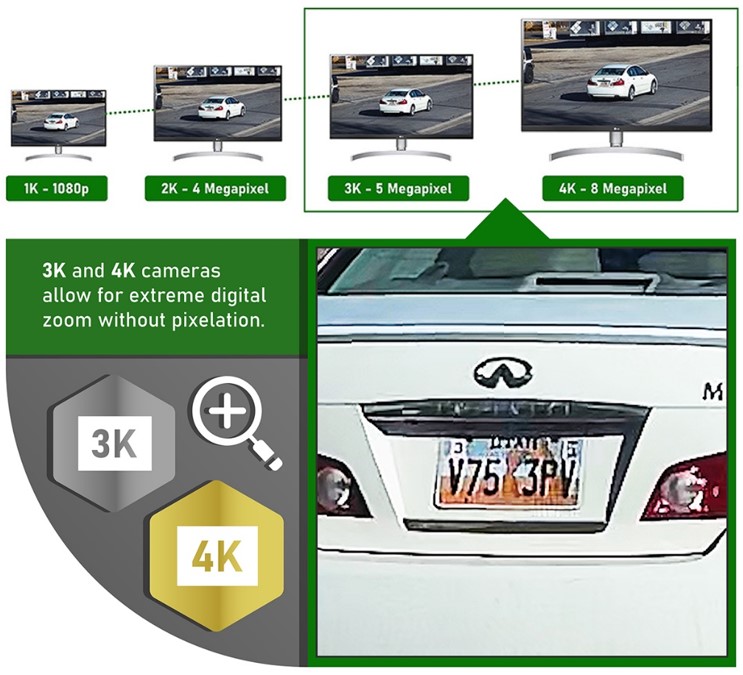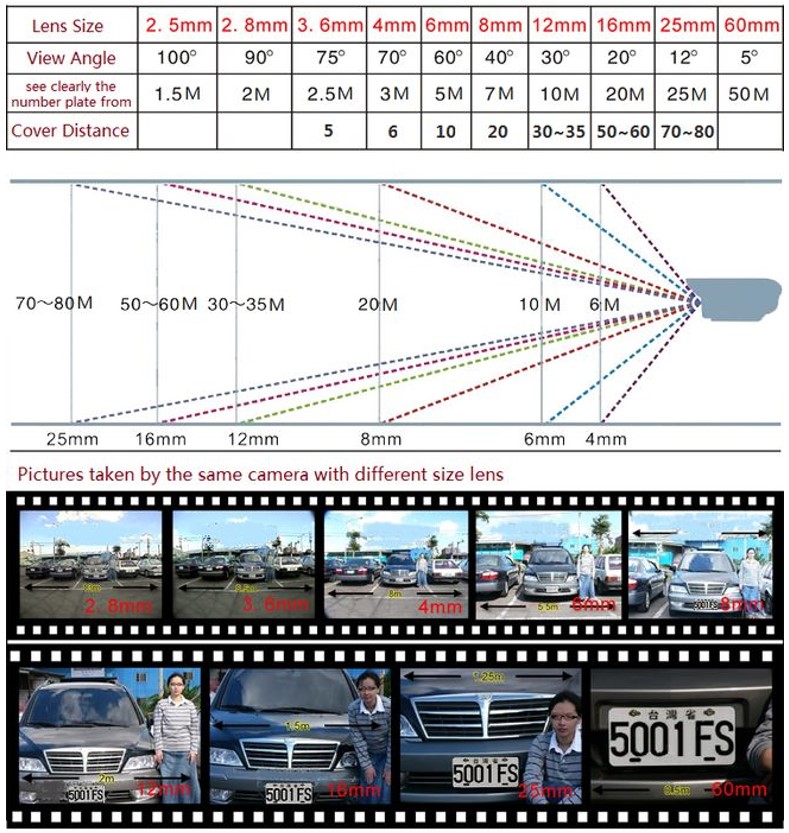When it comes to protecting office space from intruders, finding the right security cameras can make all the difference. However, knowing which cameras to use, all the available features, focal lengths, and mega-pixels can be confusing. We hope the information below will help guide you find the best security camera solution for your office.
Choosing the Right Cameras
Security cameras offer a wide range of resolutions and come in a variety of styles and qualities. Many cameras offer a different technologies as well that range from color night vision to AI driven object detection. Pinpointing the right security camera model that offers the technology you need is key to getting the proper cameras for your business.
Two important factors to consider when choosing a security camera are the quality of the image and the field of view the camera offers. These two factors are mainly made up in the resolution and the focal length of the camera.
The resolution of your camera is typically measured in megapixels; resolution refers to the size of the video being captured by the camera. Most security cameras will offer a range of options from two megapixels all the way up to eight megapixels. Smaller images produce low resolution video, while larger images produce high-definition videos—the higher the image being recorded, the better the quality will be.
A two-megapixel camera can produce up to 1080p quality resolution, which is very minimal in today’s standards for video quality. A four-megapixel camera can provide twice that resolution. A five-megapixel camera improves video quality and enables a further digital zoom. Furthermore, an eight-megapixel camera offers some of the best image quality at 4K resolutions.
Here is a helpful chart provided by backstreet-surveillance.com:

The focal length of a camera refers to the distance measured between the image sensor and the lens. This determines how far of a distance the camera can capture footage. The most common focal length for security cameras will range between 3.6 mm (allows for about a 72-degree field of view) and 2.8 mm (allows for about a 90-degree field of view). However, there are cameras that offer a wider or narrower field of view as well. See below for another useful chart to help identify different focal points and the distance they capture.

Today, many cameras include a variety of other built-in technologies that are a good fit for unique situations. Color night vision is a recent technology that some higher-end cameras now include. Some cameras advertise a color night vision mode that allows for high quality, full color night vision up to 90 feet in distance. This can help provide greater detail when trying to identify a potential suspect in a break-in or other related circumstances.
Many cameras also allow you to zero-in on how you want to record. For example, one can set a region in the camera settings that will only record when motion is detected within that region. This feature can help prevent unnecessary recordings of unimportant data.
Cameras have improved even further by implementing AI (Artificial Intelligence) driven detection. This smart detection feature can allow your camera to detect when a particular object steps into the camera’s view such as a person, an animal, or a vehicle. Cameras with this feature can be set to only record when these specific objects enter their field of view.
Using the information above and learning some of the latest features available to new cameras should help you make a better decision when determining what cameras are right for your office security. Natural Networks is a fully Managed IT Services Provider, and we work with setting up and installing security cameras for businesses of all sizes. If you’re interested in learning more about how we can help you in finding the best security cameras for your office, give us a call today!



